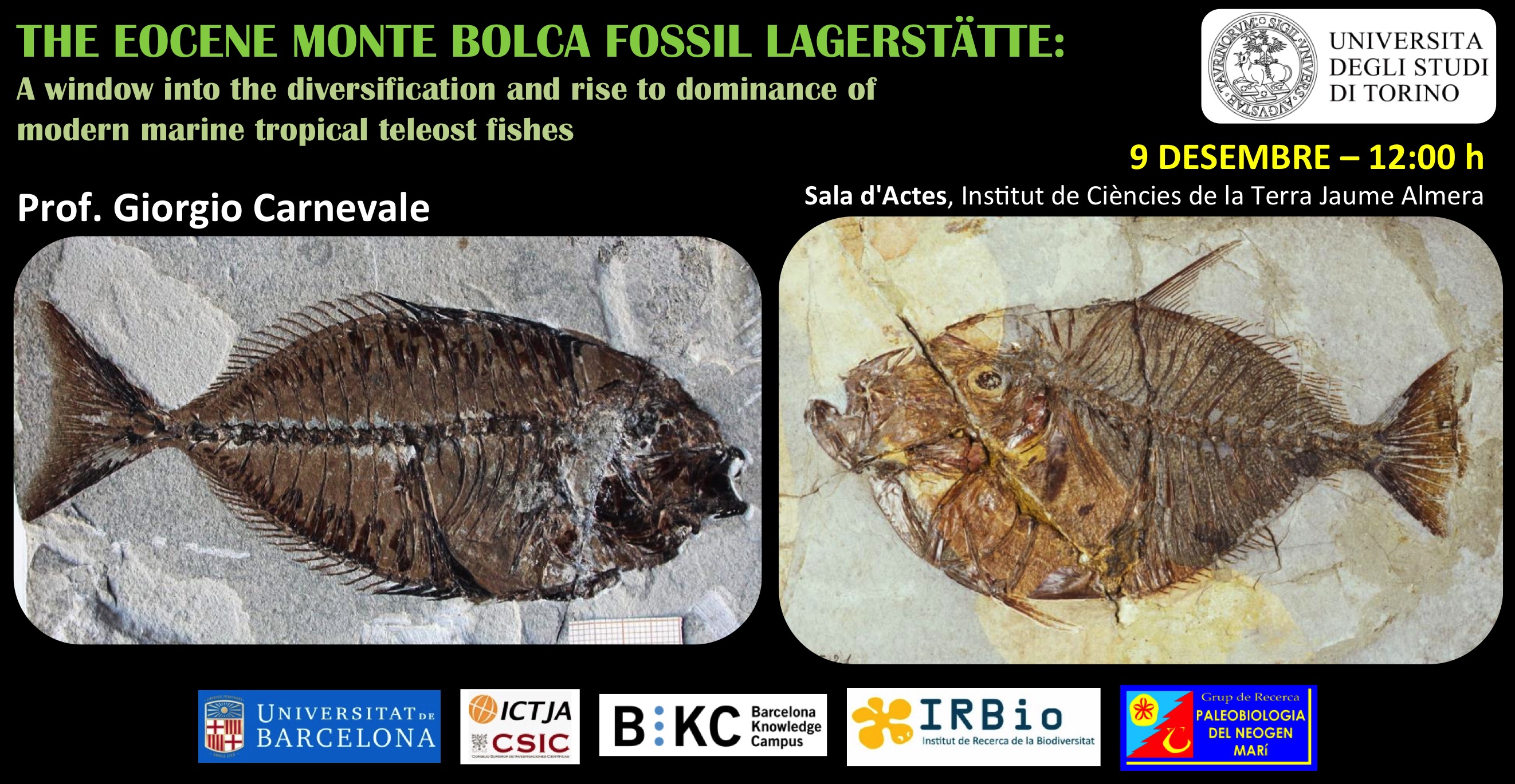The Eocene Monte Bolca Fossil Lagerstätte: A window into the diversification and rise to dominance o

Conferenciant: Prof. Giorgio Carnevale, Dipartimento di Scienze della Terra, Università degli Studi di Torino
Dia: Dimecres, 9 de desembre
Hora: 12 h
Lloc: Sala d'Actes, Institut de Ciències de la Terra Jaume Almera (ICTJA), C/ Lluís Solé i Sabarís, s/n
Resum:Because of their exquisite preservation and attractive appearence, the fossil fishes from Monte Bolca (northeastern Italy) have been coveted since the XVI century by aristocrats and noblemen to enrich and enhance their collections of natural history objects. The fish fauna of Monte Bolca is certainly one of the most important ichthyofaunistic fossil assemblages. The fish material is outstanding in terms of preservation quality and number of specimens, making this extraordinary assemblage the most diverse of all the Cenozoic marine ichthyofaunas. Overall, these fossils contributed significantly to the development of modern fish systematics, especially that of teleosts. Up to date, more than 240 taxa have been described based on several thousands of specimens extracted from the Pesciara and Monte Postale sites, and now disseminated in many museums, research institutions and private collections around the world. The fishes of Monte Bolca provide the earliest evidence of a tropical shallow marine fish assemblage of modern type, in the aftermath of the end-Cretaceous extinction. Despite the compositional differences between the Monte Bolca fish assemblage and those characteristic of modern reefs, a general affinity is evident and the presence of a reefal signature is undeniable. As a matter of fact, the teleost assemblage of Monte Bolca documents the emergence of new feeding modes, including herbivory, nocturnal feeding and high precision benthic feeding.
Despite the considerable efforts devoted to the definition of the taxonomic composition and phylogenetic significance of the Monte Bolca fish assemblage, its paleoecological and taphonomic features have received only limited attention. However, controlled excavations conducted at both the productive sites from 1999 to 2011 have provided new data about the paleoenvironmental context of this Eocene Fossil Lagerstätte.